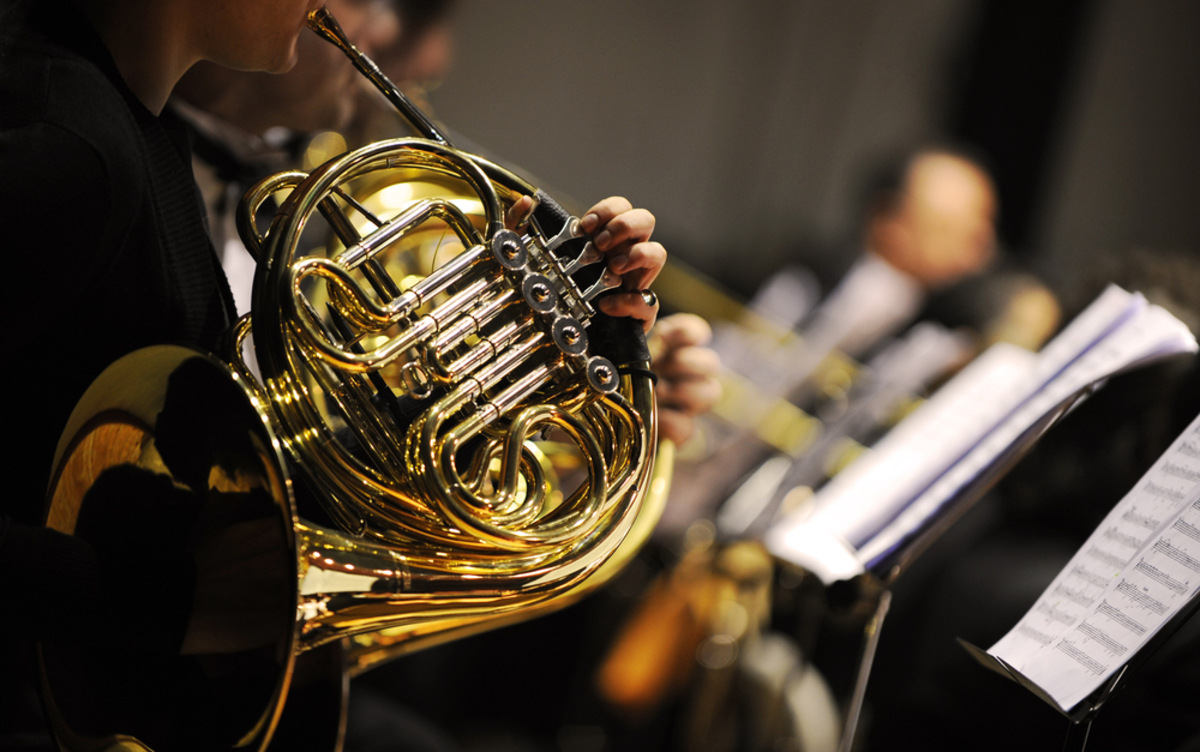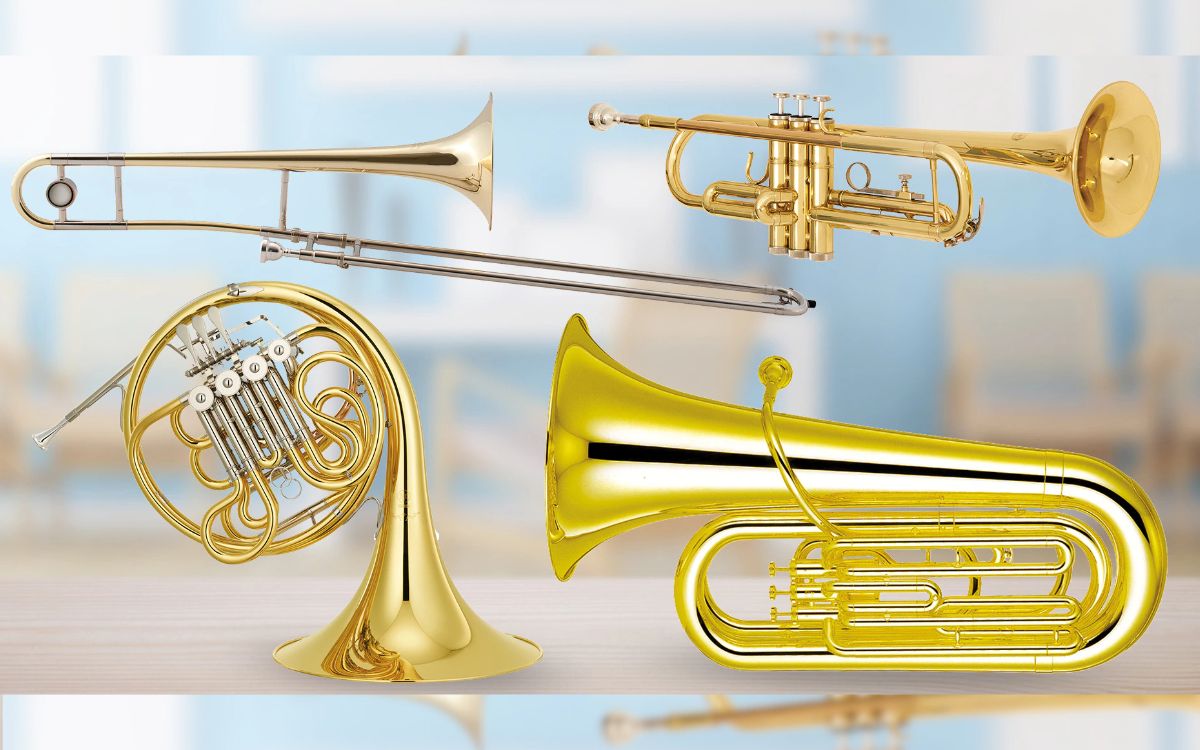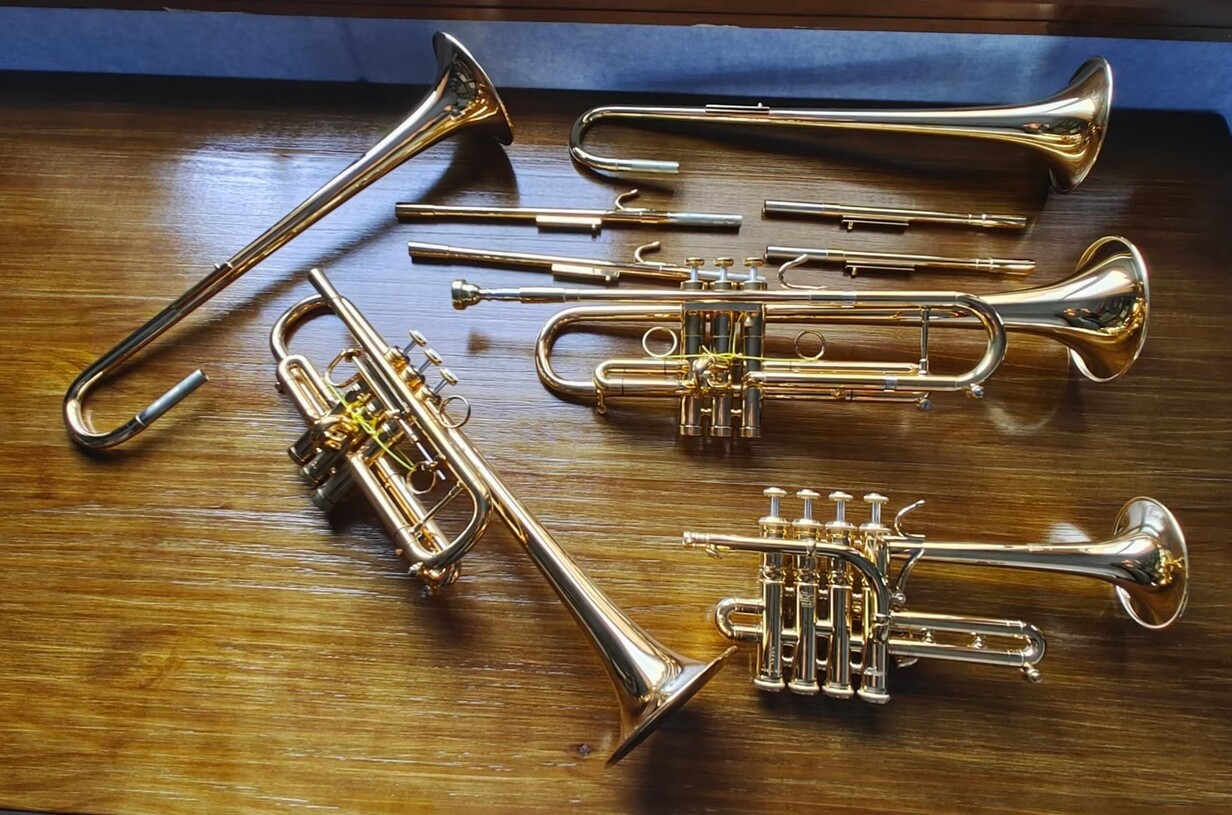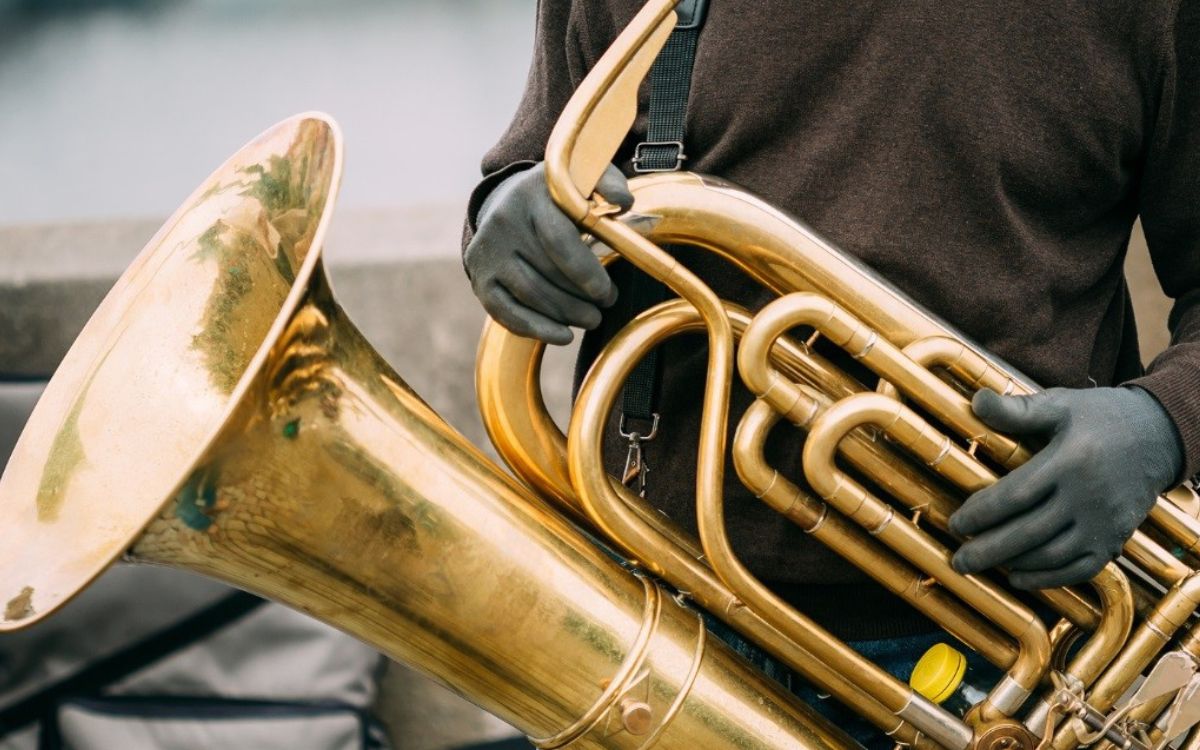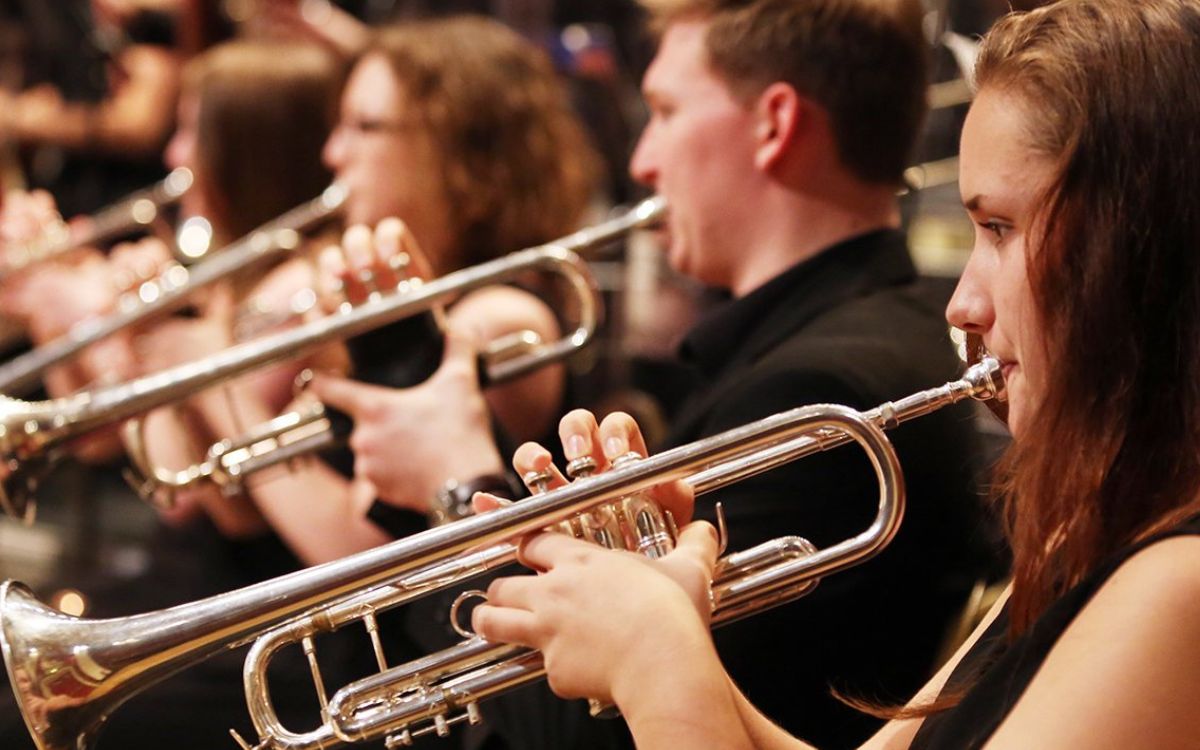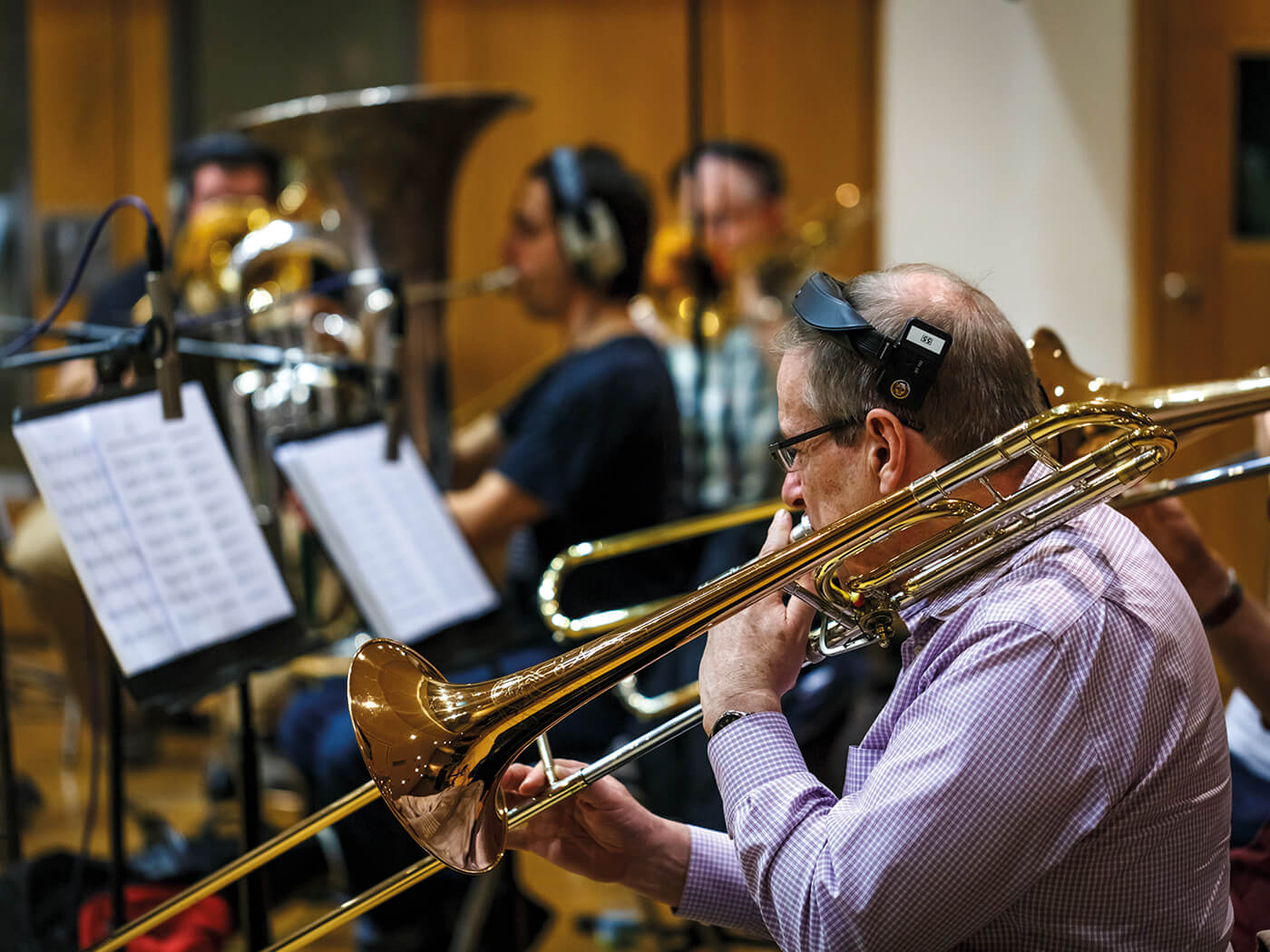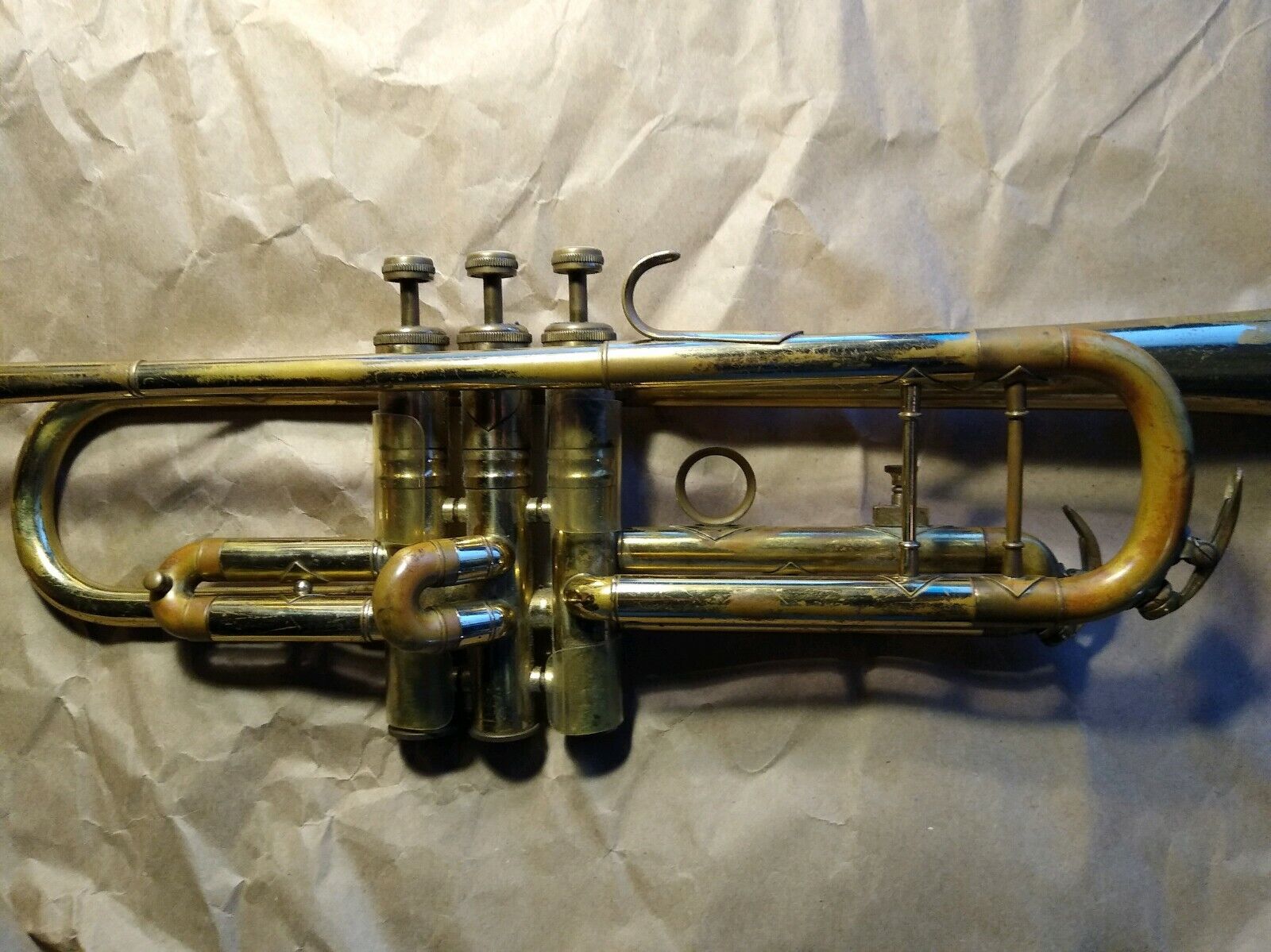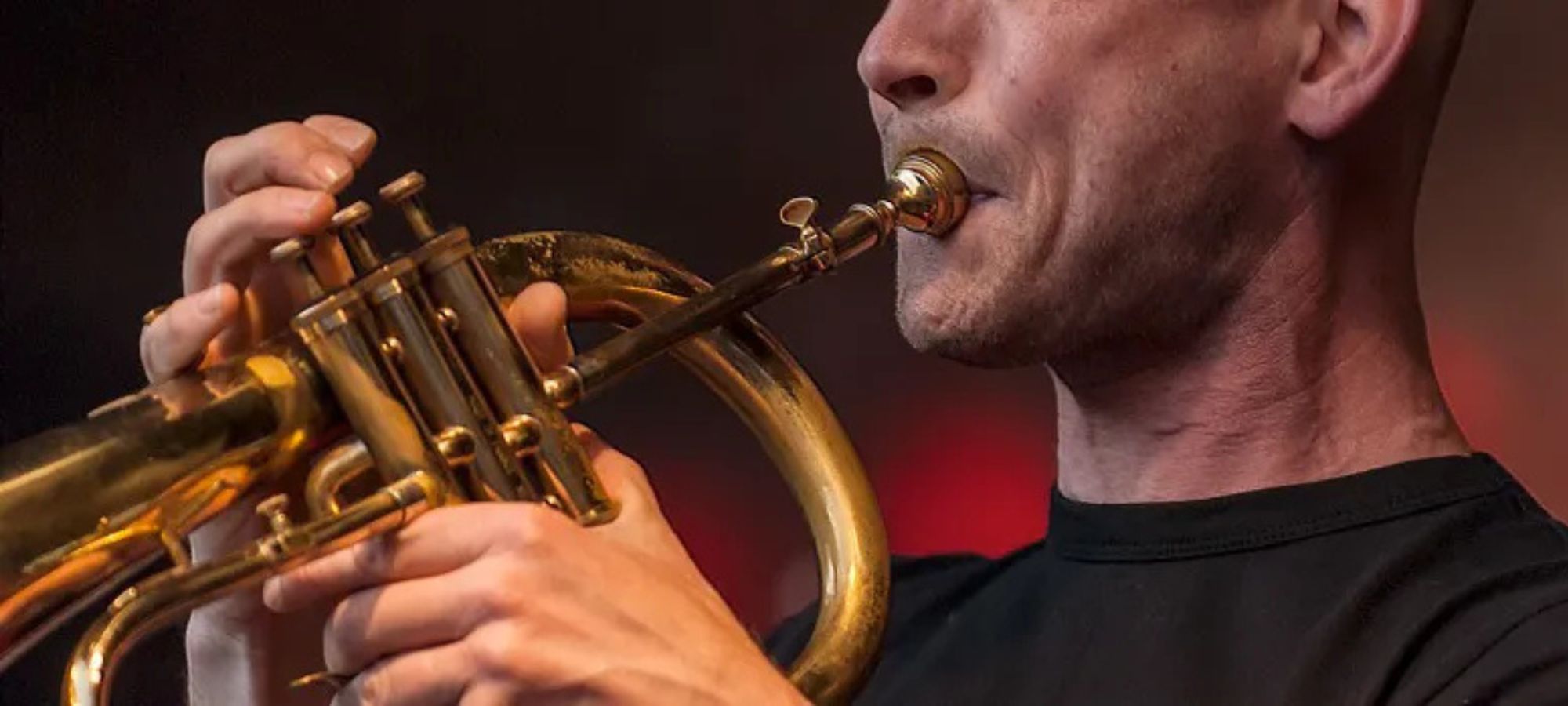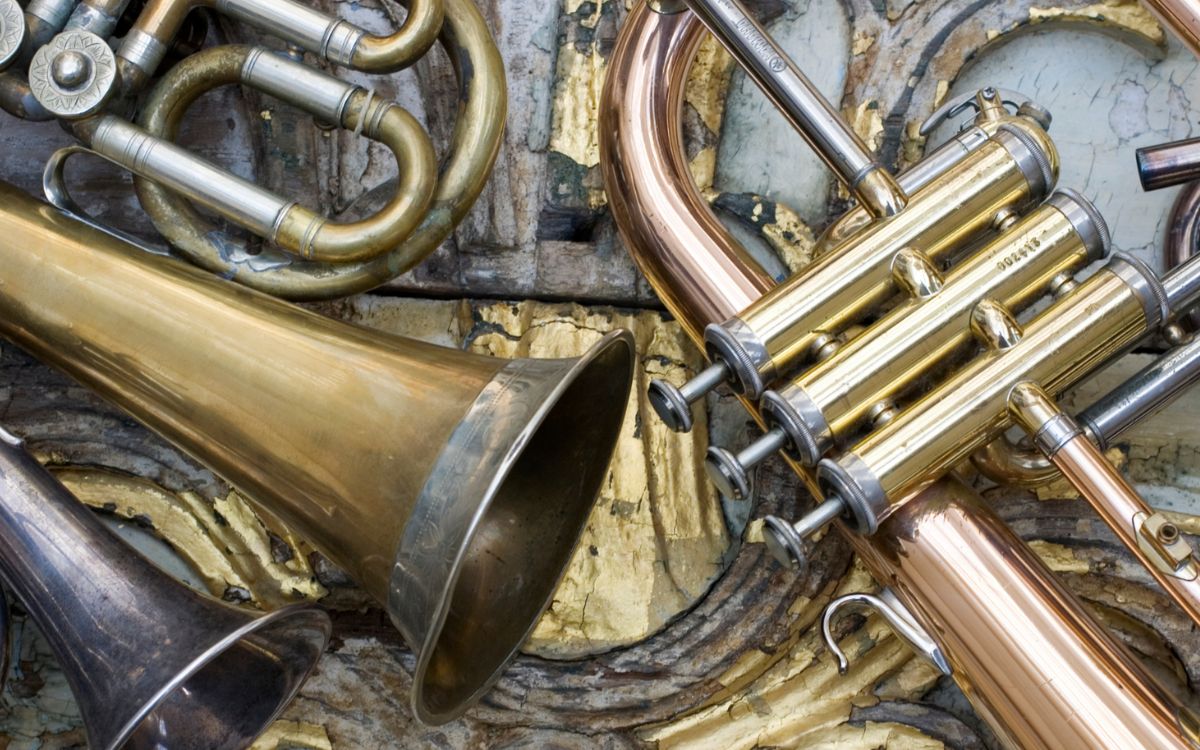Home>Instruments>Brass Instruments>What Do All Brass Instruments Have In Common
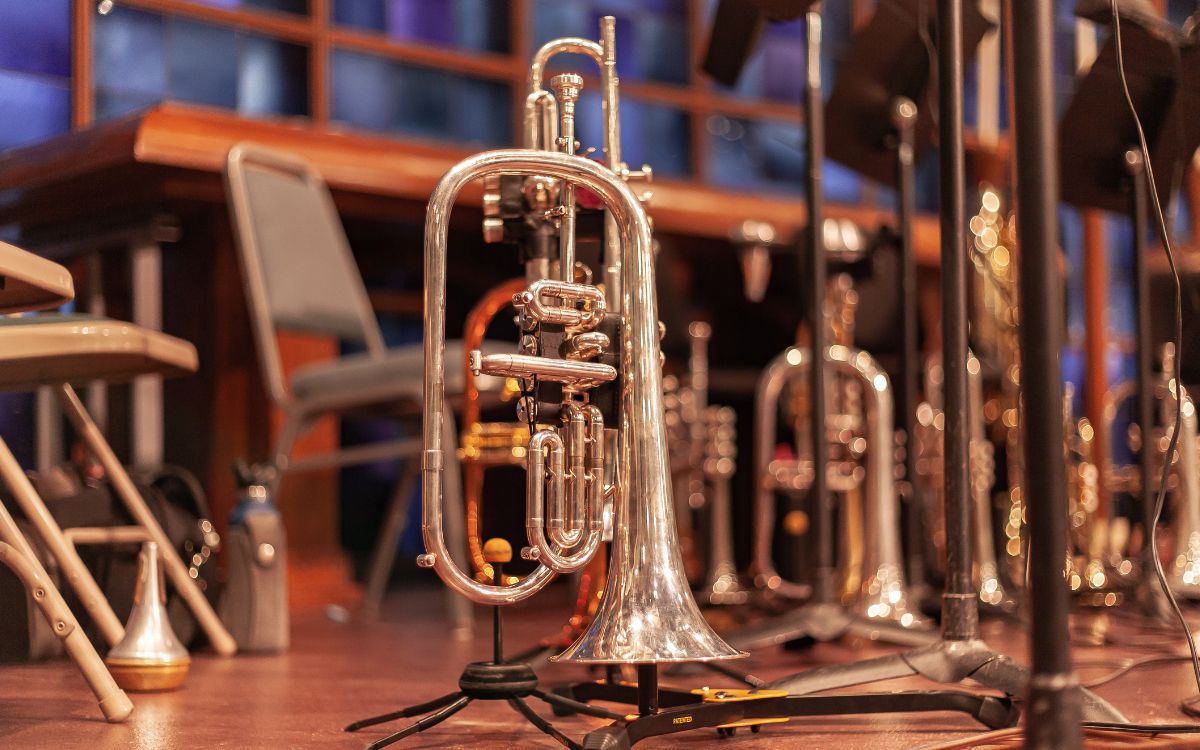

Brass Instruments
What Do All Brass Instruments Have In Common
Modified: January 22, 2024
Discover what makes brass instruments unique and how they all share common features. Explore the world of brass music and learn why these instruments are loved by musicians worldwide.
(Many of the links in this article redirect to a specific reviewed product. Your purchase of these products through affiliate links helps to generate commission for AudioLover.com, at no extra cost. Learn more)
Table of Contents
Introduction
Brass instruments have fascinated musicians and audiences for centuries with their rich tones and powerful sound. From trumpets and trombones to tubas and French horns, these instruments are an integral part of various musical genres, from classical and jazz to marching bands and orchestras. But what exactly are brass instruments and what sets them apart from other instruments?
Brass instruments are a family of musical instruments that are characterized by their signature brass construction. The body of these instruments is typically made from brass or other metals, such as silver or nickel silver. They produce sound by the player buzzing their lips into a cup-shaped mouthpiece, which creates vibrations that resonate through the instrument’s tubing.
Throughout history, brass instruments have played a crucial role in different cultures and societies. They were first invented in ancient times, with evidence of early brass instruments found in archaeological sites dating back to ancient Egypt and Greece. Over time, brass instruments evolved and became more sophisticated, leading to the development of various styles and designs.
What makes brass instruments unique is their ability to produce bold and resonant tones. The use of brass in their construction allows for the amplification of sound, resulting in a distinct and powerful sound quality. These instruments are also known for their versatility, as they can produce a range of tones from mellow and melodic to bright and brassy.
Furthermore, brass instruments offer a wide pitch range, allowing players to explore different musical expressions. These instruments are typically played by brass players who have mastered specific techniques, such as lip buzzing, embouchure control, and breath control. The interaction between the player and the instrument is what brings these instruments to life and allows for the creation of beautiful music.
In this article, we will explore the fascinating world of brass instruments, delving into their common features, playing techniques, sound production, and maintenance. Whether you are a musician looking to expand your knowledge or simply a music enthusiast seeking to understand the nuances of brass instruments, read on to discover the captivating world of brass music.
Definition of Brass Instruments
Brass instruments are a family of musical instruments that are characterized by their construction from brass or other metals. They belong to the larger category of wind instruments, which are instruments that produce sound by the vibrations of air. Brass instruments produce sound when the player’s lips vibrate against a cup-shaped mouthpiece, creating vibrations that resonate through the instrument’s tubing.
What sets brass instruments apart from other wind instruments is their use of valves or slides to change the length of the instrument’s tubing. This allows players to produce different pitches and extend the instrument’s range. Brass instruments come in various sizes and shapes, including trumpets, trombones, French horns, tubas, and cornets, among others.
One distinguishing feature of brass instruments is their ability to produce a powerful and resonant sound. The use of brass in their construction enhances sound projection, resulting in a bold and distinctive tone. The player’s embouchure, or the way they shape their lips on the mouthpiece, also plays a significant role in controlling the sound quality and intonation of the instrument.
Brass instruments can be found in a wide range of musical genres, from classical and orchestral music to jazz, blues, and popular music. They are essential components of brass bands, marching bands, and symphony orchestras, adding depth and richness to the ensemble’s sound.
Overall, brass instruments are distinguished by their brass construction, use of valves or slides, and their ability to produce vibrant and resonant sound. Their versatility and unique tonal qualities make them a vital part of the musical world, captivating audiences and musicians alike with their powerful and expressive sound.
Historical Background
The history of brass instruments can be traced back thousands of years, with evidence of early brass-like instruments found in ancient civilizations. The Egyptians, for example, used bronze trumpets as early as 1500 BCE, while the Greeks developed a wide range of brass instruments, including the agora, a curved horn, and the hydraulis, an ancient precursor to the pipe organ.
However, the modern development of brass instruments began in the Middle Ages, where advancements in metalworking allowed for the creation of more refined and sophisticated instruments. The trumpet, in particular, played a significant role during this period, primarily in military contexts and as fanfare instruments in royal courts.
During the Renaissance and Baroque eras, brass instruments gained prominence in both sacred and secular music. Composers such as Giovanni Gabrieli and Johann Sebastian Bach wrote intricate brass parts for their choral and instrumental compositions, highlighting the expressive capabilities of these instruments.
In the 19th century, brass instruments went through a period of significant evolution and transformation. The development of valves in the early 1800s revolutionized the brass instrument family, allowing players to play chromatic scales and explore a wider range of musical possibilities. This led to the creation of instruments such as the modern trumpet, French horn, trombone, and tuba.
The popularity of brass instruments grew during the Romantic era, with composers like Richard Wagner creating epic and powerful brass sections in his operas. Brass bands also emerged as a prominent musical ensemble during this time, serving as entertainment for the working-class communities.
Throughout the 20th century, brass instruments continued to evolve with advancements in manufacturing techniques and materials. The rise of jazz music in the early 20th century showcased the expressive and improvisational capabilities of brass instruments, with iconic figures like Louis Armstrong and Miles Davis pushing the boundaries of what could be achieved on these instruments.
Today, brass instruments are widely used in various musical genres, ranging from classical orchestras and jazz bands to pop and rock music. They continue to captivate audiences with their rich tones and power, carrying on a centuries-old tradition of musical excellence.
Common Features of Brass Instruments
While brass instruments come in different shapes and sizes, they share several common features that define their unique characteristics and sound. These features contribute to their versatility and distinctiveness in the musical world. Let’s explore some of the shared elements found in most brass instruments:
- Brass Construction: Brass instruments are made primarily from brass or other metal alloys. The use of brass enhances the sound projection and resonance of the instrument, creating a vibrant and powerful tone.
- Mouthpiece: Brass instruments feature a cup-shaped mouthpiece that is vital for sound production. Players create buzzing vibrations by blowing air into the mouthpiece, which then travels through the instrument’s tubing.
- Valves and Slides: Most brass instruments employ valves or slides to change the length of the tubing, thereby altering the pitch. Valves are used in instruments like trumpets and tubas, whereas slides are found in trombones. These mechanisms allow musicians to play a wide range of notes and musical scales.
- Three or Four Valve Systems: Some brass instruments, such as trumpets and euphoniums, feature three valves that control the pitch. Others, like tubas and French horns, often have four valves for enhanced pitch options. Valve combinations offer various harmonic possibilities.
- Bell: The bell is the flared portion at the end of the instrument. It serves to amplify and project the sound produced by the player. Different bell sizes and shapes affect the instrument’s tone quality and resonance.
- Curved or Straight Tubing: Brass instruments can have tubing that is either curved or straight. Curved tubing allows for a more compact instrument design and facilitates easier handling, while straight tubing provides a longer and more cylindrical path for sound production.
- Water Keys: Brass instruments often feature water keys or spit valves that allow players to remove excess moisture that accumulates during playing. These valves help maintain the instrument’s optimal performance and prevent impediments to sound production.
These common features contribute to the distinctive characteristics and versatility of brass instruments, enabling musicians to create a wide range of expressive and captivating musical performances. Whether in orchestras, bands, or solo settings, brass instruments continue to engage and enchant audiences worldwide.
Mouthpieces and Air Column
Mouthpieces play a crucial role in the production of sound in brass instruments. They are specifically designed to create a seal between the player’s lips and the instrument’s mouthpiece, allowing for precise control over tone, pitch, and volume. The buzzing of the player’s lips against the mouthpiece sets the air column inside the instrument into vibrations, producing sound.
The shape and size of the mouthpiece affect the timbre and playability of the instrument. Different brass instruments have mouthpieces with varying cup depths, throat sizes, and backbores, tailored to optimize their unique sound characteristics.
One key factor in brass instrument mouthpiece design is the rim. The rim is the outer edge of the mouthpiece that makes contact with the player’s lips. It should be comfortable to play, providing stability and support while allowing for flexibility and control. The inside of the rim is typically rounded for comfort and ease of playing.
The cup of the mouthpiece is the hollow, concave portion that provides a cavity for the lips. A deeper cup generally produces a darker, warmer sound, while a shallower cup tends to result in a brighter, more focused tone. Players can experiment with different cup depths to achieve their desired sound palette.
The throat of the mouthpiece is the passage through which air flows into the instrument. It acts as a conduit for the vibrations created by the player’s buzzing lips, allowing the air column inside the instrument to resonate and produce sound. The throat size can impact the resistance, intonation, and projection of the instrument.
Another critical element is the backbore, which is the tapered portion of the mouthpiece that connects the cup and the throat. The backbore affects the airflow and can influence the instrument’s response, resistance, and tone. Different backbore designs offer players varying levels of control and flexibility.
The air column inside a brass instrument is a fundamental component for sound production. When a player buzzes their lips into the mouthpiece, the resulting vibrations travel through the instrument’s tubing. The length and shape of the tubing, along with the manipulation of valves or slides, alter the pitch produced.
Playing brass instruments requires a balance between air supply and embouchure control. The embouchure refers to the way a player shapes and positions their lips, teeth, and facial muscles on the mouthpiece. Proper embouchure is crucial for producing clear and resonant tones, as well as for controlling intonation and playing technique.
To achieve different pitches, brass players use varying degrees of embouchure tension and lip buzzing speed. Increased lip tension and faster buzzing create higher pitches, while decreased tension and slower buzzing produce lower pitches.
The mouthpiece and the player’s control of the air column are essential aspects in the production of sound in brass instruments. The unique combination of mouthpiece design, embouchure control, and manipulation of the air column allows brass players to create a vast range of expressive and captivating musical performances.
Valves and Slides
Valves and slides are integral components of many brass instruments, allowing players to manipulate the length of the instrument’s tubing and produce different pitches and notes. These mechanisms provide versatility and expand the musical possibilities of brass instruments.
Valves are commonly found in instruments such as trumpets, cornets, flugelhorns, and tubas. They consist of three or four piston-like valves that, when pressed, redirect the airflow through additional tubing, effectively lengthening the instrument’s path and lowering the pitch. Each valve adds a specific length of tubing, altering the fundamental pitch of the instrument by a specific interval, such as a step or a half-step.
When a valve is depressed, the air column is routed through the extra tubing, effectively lengthening the instrument’s pathway and lowering the pitch produced. Releasing the valve restores the original tubing length and raises the pitch back to its initial position.
Slides, on the other hand, are commonly found in trombones. They consist of a telescoping tube that the player extends or retracts to change the length of the instrument’s tubing. By extending the slide, the player lengthens the air column, resulting in a lower pitch. Conversely, retracting the slide shortens the air column, raising the pitch.
Valves and slides provide more precise control over pitch compared to naturally altering lip tension and buzzing speed. They allow for immediate and accurate changes in pitch, making complex passages and rapid note transitions more accessible for the musician.
Valves and slides also offer the possibility of alternate and extended playing techniques. For example, players can use valve combinations to create unique harmonies, glissando effects, quick scale runs, and extended range. Slides, on the other hand, allow for smooth and seamless glissandi, producing a distinctive and expressive sliding sound.
Proper care and maintenance of valves and slides are essential to ensure smooth operation and accurate pitch. Regular cleaning and lubrication of the valve casings and slides help to prevent sticking and ensure smooth movement. Brass instrument players develop techniques for maintaining the valves and slides in top condition, allowing for optimal performance and longevity of the instrument.
Valves and slides are vital components that contribute to the versatility and flexibility of brass instruments. They allow musicians to explore a wide range of pitches, play complex musical passages, and employ various playing techniques, adding depth and expression to their performances.
Materials Used in Construction
Brass instruments are typically constructed using a combination of metals, with brass being the primary material. The choice of materials significantly influences the instrument’s sound, playability, and durability. Let’s explore the different materials commonly used in the construction of brass instruments:
- Brass: As the name suggests, brass instruments are predominantly made of brass, which is an alloy composed primarily of copper and zinc. Brass provides a balance between malleability and strength, allowing for the shaping of intricate instrument components while maintaining structural integrity.
- Silver-Plated Brass: Some brass instruments, particularly those used in professional settings, may have a silver-plated finish. Silver plating not only enhances the instrument’s appearance but also offers a different tonal quality and resistance compared to bare brass. Silver plating can provide a brighter and more focused sound.
- Nickel Silver: Another metal commonly used in the construction of brass instruments is nickel silver, which is an alloy of copper, zinc, and nickel. Nickel silver has a silvery appearance, similar to silver-plated brass, and is often used for instrument components such as slides, valve casings, and tubing. It provides durability and corrosion resistance.
- Gold Brass: Gold brass is an alloy that contains a higher ratio of copper to zinc compared to standard yellow brass. This alloy offers a warmer and richer sound, favored by many professional brass players. Gold brass is often used in the construction of high-end instruments.
- Rose Brass: Rose brass is another variation of brass that contains a higher copper content. It has a reddish appearance and is valued for its mellow and dark tonal qualities. Instruments with rose brass components, such as the bell or lead pipe, often exhibit a warmer and slightly mellower sound.
- Stainless Steel: In certain brass instruments, such as trombones, stainless steel is used for the slides. Stainless steel offers excellent corrosion resistance, durability, and smooth slide action, ensuring optimal performance and long-lasting operation.
The choice of material in brass instrument construction is a combination of tradition, personal preference, and desired tonal characteristics. Different alloys and finishes can result in subtle differences in sound, projection, and response. Musicians often experiment with different materials to find the combination that best suits their musical style and preferences.
It’s important to note that the skill and artistry of the instrument maker also play a significant role in achieving the desired sound and playability. The precision in crafting the instrument, including the thickness of the tubing, the shape of the bell, and the placement of braces, contributes to the instrument’s overall performance.
By carefully selecting and combining materials, instrument makers create brass instruments that offer a wide range of expressive possibilities, ensuring that each instrument possesses its own unique character and sound.
Embouchure and Playing Techniques
Embouchure and playing techniques are fundamental aspects of brass instrument performance. The way a player forms their embouchure, or the position and control of the lips and facial muscles, greatly affects the sound quality, articulation, and flexibility of the instrument. Let’s explore the importance of embouchure and some common playing techniques used in brass instruments:
Embouchure:
The embouchure refers to the way a brass player shapes their lips, tongue, and facial muscles to produce sound. A proper embouchure is crucial for achieving a clear and resonant tone, controlling intonation, and playing with ease and flexibility.
A balanced embouchure maintains a good seal between the lips and mouthpiece, allowing for efficient air transfer and vibration. Key components of a solid embouchure include:
- Lip position: The bottom lip is generally placed inside the cup of the mouthpiece, while the top lip rests lightly on the rim. The corners of the mouth are slightly firm and supportive.
- Aperture: The aperture is the opening between the lips through which air passes. It should be small and focused for playing higher pitches and larger and more relaxed for lower ones.
- Tongue placement: The tongue’s position inside the mouth affects tone production and articulation. It should be relaxed and slightly arched to facilitate a clear sound and accurate attacks.
- Teeth and jaw alignment: Proper alignment of the teeth and jaw helps maintain stability and control of the embouchure.
Developing a consistent and efficient embouchure takes time and practice. Brass players often undergo guidance from teachers and coaches to refine their embouchure, finding the balance that works best for their playing style and sound goals.
Playing Techniques:
Brass instruments offer a range of unique playing techniques that help shape the expressive capabilities of the instrument. Some common techniques include:
- Articulation: Articulation refers to how notes are initiated and separated from one another. Players use various tonguing techniques, such as using the tip of the tongue or “doo” syllables, to articulate notes with clarity and precision.
- Vibrato: Vibrato is a slight fluctuation in pitch that adds warmth and expression to a sustained note. By slightly varying the air stream or lip tension, players create a controlled vibrato effect.
- Glissando: Glissando is a technique where the player slides smoothly from one note to another. It is often used to create dramatic or expressive effects, particularly in jazz and blues music.
- Flutter Tonguing: Flutter tonguing involves rolling the letter “r” or “t” with the tongue while sustaining a note. This technique creates a rapid and airy sound, adding texture and character to the music.
- Mutes: Mutes are devices inserted into the bell of the instrument to alter its sound. Trumpets, trombones, and other brass instruments utilize different types of mutes, such as straight mutes, cup mutes, or wah-wah mutes, to achieve unique tonal colors and effects.
- Extended Techniques: Brass players also explore extended techniques, such as growling, multiphonics, and pitch bending, to push the boundaries of what the instrument can do and create unconventional sounds and effects.
Mastering these techniques requires practice, experimentation, and guidance from experienced teachers and mentors. Developing a solid foundation in embouchure and exploring various playing techniques allows brass players to fully express their musical ideas and bring depth and nuance to their performances.
Sound Production and Projection
Sound production and projection are essential aspects of brass instruments, contributing to their distinctive and powerful sound. Understanding how brass instruments produce sound and project it is key to mastering these instruments. Let’s explore the mechanics behind sound production and factors influencing sound projection:
Sound Production:
The production of sound in brass instruments begins with the player’s lips buzzing into the mouthpiece. The buzzing of the player’s lips creates vibrations that travel through the instrument’s tubing. As the vibrations pass through the tubing, they interact with the instrument’s shape and length, enhancing or dampening certain frequencies.
The air column inside the instrument acts as a resonator, amplifying the sound produced by the buzzing lips. The length of the tubing, controlled by valves or slides, determines the fundamental pitch of the instrument. By altering the length of the tubing, players can produce different pitches and play a wide range of notes.
The cup-shaped mouthpiece and the shape of the instrument’s bell also contribute to sound production. The mouthpiece acts as a funnel, focusing the player’s buzzing lips and directing the vibrations into the instrument. The bell helps to amplify and project the sound outward, shaping the instrument’s overall tonal characteristics.
Sound Projection:
Brass instruments are known for their ability to produce a powerful and resonant sound that can cut through other instruments and reach large audiences. Several factors influence the projection of sound in brass instruments:
- Instrument Design: The design of the instrument, including the taper and diameter of the tubing and the shape of the bell, affects sound projection. Instruments with larger bores, wider bells, and a more open design tend to have greater projection capabilities.
- Player Technique: The way a player uses their embouchure, breath control, and tonal concept influences sound projection. Proper breath support and the ability to control the air stream contribute to a focused and resonant sound that projects effectively.
- Resonance: The resonance of the instrument, influenced by factors such as the thickness of the tubing and the bell material, plays a role in sound projection. Instruments with good resonance tend to project sound more efficiently, allowing for greater volume and clarity.
- Room Acoustics: The environment in which the instrument is played also affects sound projection. The acoustics of the room or performance space can either enhance or hinder the instrument’s projection. A well-designed concert hall with appropriate reverberation can help carry the sound throughout the space.
Sound projection is a combination of the instrument’s design, the player’s technique, and the acoustics of the performance space. Brass players strive to develop a robust and resonant sound that can project effectively, allowing their music to reach and engage audiences.
Mastering sound production and projection on a brass instrument requires a combination of technical skill, musical sensitivity, and an understanding of the instrument’s unique characteristics. With practice and experience, brass players can harness the power and expressiveness of their instruments to create captivating and impactful musical performances.
Maintenance and Care of Brass Instruments
Maintaining and caring for brass instruments is crucial for preserving their longevity, playability, and sound quality. Regular maintenance and proper care practices can prevent damage, improve performance, and ensure that the instrument remains in optimal condition. Here are some essential tips for maintaining and caring for brass instruments:
- Cleaning: Regular cleaning is vital for removing dirt, oils, and debris that can accumulate on the instrument’s surface and inside the tubing. After each playing session, wipe down the instrument with a clean cloth to remove moisture and any fingerprints. Use a valve casing brush or a flexible snake brush to clean the inside of the tubing.
- Valve and Slide Care: Valves and slides should be regularly inspected and maintained. Lubricate the valves with a recommended valve oil to ensure smooth and efficient movement. Apply slide grease or cream to slides to prevent sticking. Clean and lubricate them as needed, following the manufacturer’s instructions.
- Water Key Maintenance: Brass instruments often have water keys or spit valves to release accumulated moisture. Regularly empty the water keys and wipe the area dry to prevent buildup and clogging. Don’t forget to inspect and clean the water key springs to maintain their functionality.
- Storage: When not in use, store brass instruments in a protective case to shield them from dust, humidity, and potential damage. It is important to use a case that fits the instrument properly, providing adequate padding and support.
- Temperature and Humidity: Avoid exposing brass instruments to extreme temperature changes and high humidity, as these conditions can affect the instrument’s performance and cause damage. Store the instrument in a cool, dry place, and avoid leaving it in direct sunlight or near heating or cooling vents.
- Professional Maintenance: Regularly schedule professional maintenance and servicing for your brass instrument. Professional technicians can perform thorough cleanings, check for wear and tear, adjust tuning slides, and address any mechanical issues. This helps maintain optimal performance and identify potential problems before they become major concerns.
- Keep Mouthpiece Clean: It is important to keep the mouthpiece clean and free from debris. Regularly wash the mouthpiece with warm soapy water, using a mouthpiece brush to remove any residue. Avoid using harsh cleaners or abrasive materials that may damage the mouthpiece.
- Handle with Care: Handle brass instruments with care to prevent accidental damage. Avoid banging or dropping the instrument, and be mindful of fragile parts such as valves, slides, and the bell. When assembling or disassembling the instrument, use a gentle twisting motion to prevent undue stress or misalignment.
By following these maintenance and care practices, brass instrument players can ensure that their instruments remain in excellent condition and perform at their best. With proper care, regular maintenance, and attention to detail, brass instruments can provide years of enjoyment and musical expression.
Conclusion
Brass instruments hold a significant place in the world of music, captivating audiences with their rich sound, versatility, and powerful projection. From the iconic trumpet to the elegantly curved French horn and the thunderous tuba, brass instruments have a long and storied history that spans across different cultures and musical genres.
Throughout this article, we have explored the defining characteristics of brass instruments, from their construction materials to their unique playing techniques. We have delved into the importance of embouchure and the mechanics of sound production and projection, understanding the intricate interplay between the player, instrument, and musical expression.
We have also emphasized the significance of proper maintenance and care for brass instruments. Regular cleaning, lubrication of valves and slides, and safeguarding against extreme temperature and humidity fluctuations ensure that these instruments remain in optimal condition, allowing players to continue creating beautiful music for years to come.
Brass instruments offer a wide range of tonal colors and expressive possibilities, adding depth and character to various musical ensembles and genres. Their resonant sound has the power to evoke strong emotions and captivate listeners in both intimate settings and grand concert halls.
Whether you are an aspiring musician, a music lover, or simply curious about the world of brass instruments, the knowledge shared in this article provides a solid foundation for understanding their unique qualities and the skills required to master them.
So, let us continue to appreciate the craftsmanship and artistry behind these extraordinary instruments and the talented musicians who bring them to life. The world of brass music will forever enchant us with its iconic sounds, timeless melodies, and the unwavering passion of those who play them.

